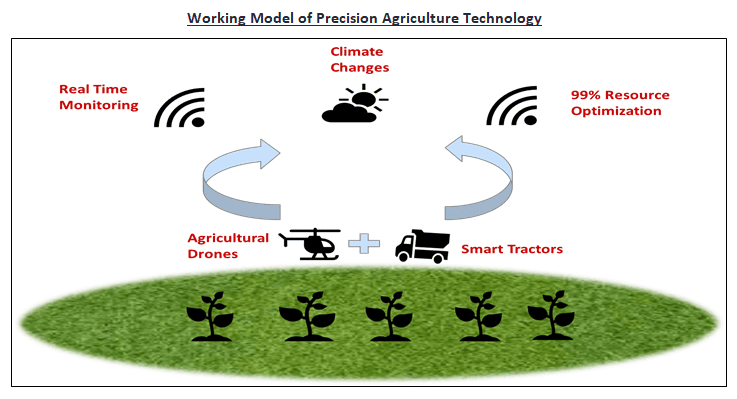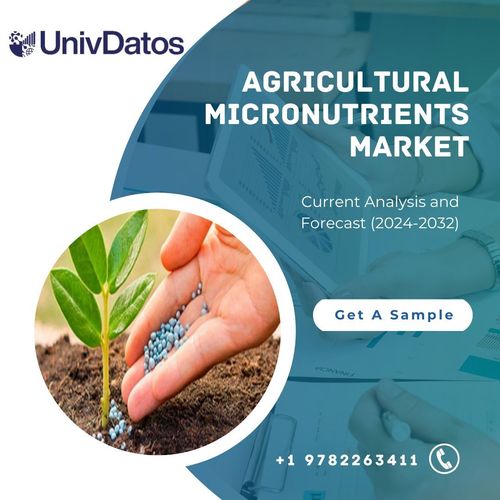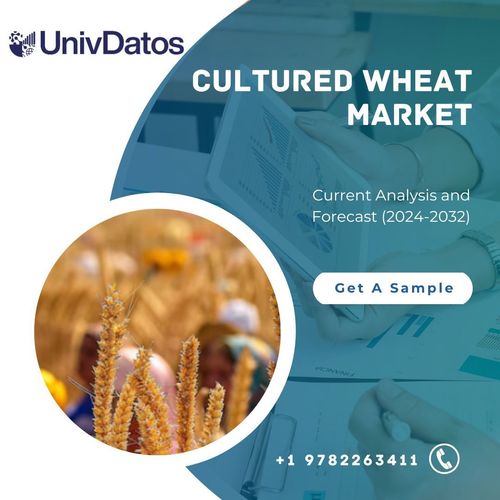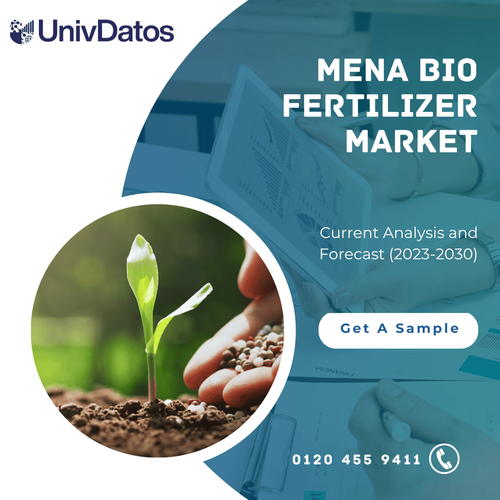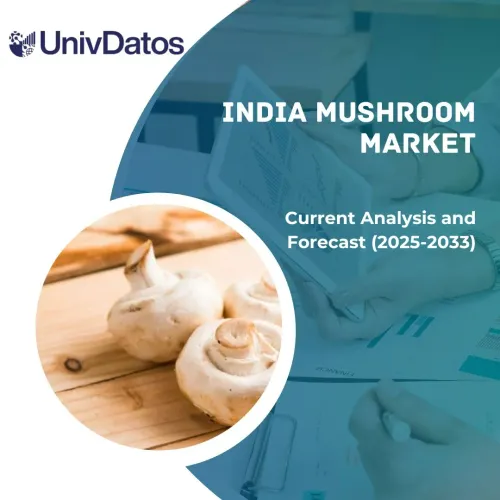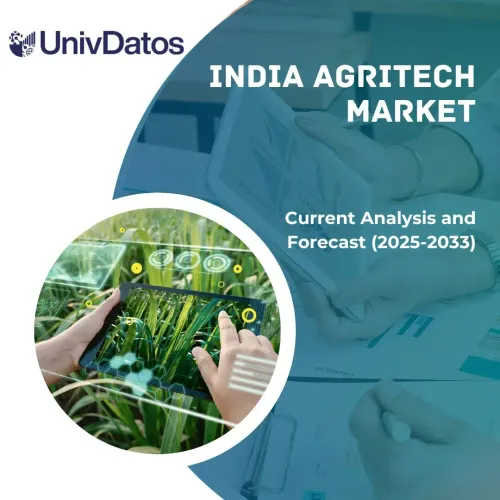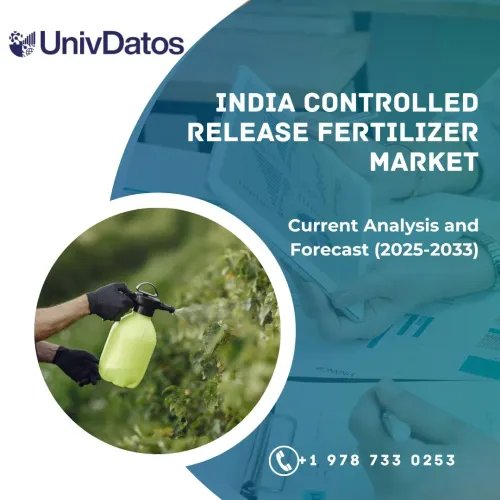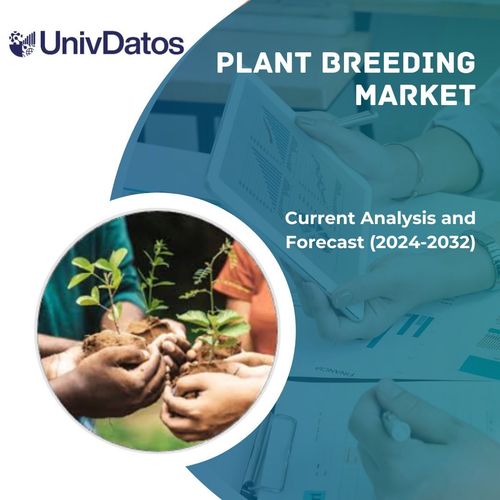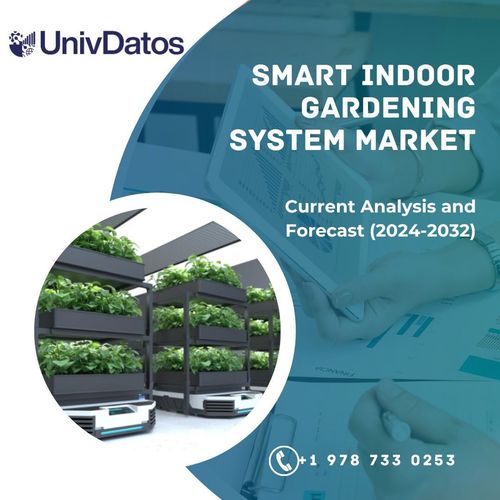- Home
- About Us
- Industry
- Services
- Reading
- Contact Us
Precision Agriculture Market: Current Analysis and Forecast (2019-2025)
Emphasis on Component (Hardware, Software, Services), Application (Yield Monitoring, Crop Scouting, Field Mapping, Variable Rate Technology, Weather Forecasting and Tracking, Soil Monitoring, Farm Management Systems) and Region/Country
Global Precision Agriculture market was valued at US$ 4,355.9 million in 2018 and is expected to display reasonable CAGR of 16.8% over the forecast period (2019-2025). Precision agriculture is primarily defined as IT based farm management system that helps in identifying, managing and analysing the variations within the agricultural fields to achieve optimum profitability, sustainability and protection of land resource. Precision agriculture technique focuses on the increased efficiencies that can be realized by implementing various technologies and understanding and dealing with the natural variability found within the agricultural field.
With surging world population and simultaneous increase in the food demand, the overall agricultural productivity must be increase drastically. The current world population of 7.6 billion is expected to reach 8.6 billion in 2030, 9.8 billion in 2050 and 11.2 billion in 2100, according to a new United Nations report. Agriculture in the 21st century faces multiple challenges. Firstly, it has to produce more food and fibre to feed a growing population with a smaller rural labour force. Secondly, more feedstocks for a potentially huge bioenergy market, contribute to overall development in many agriculture-dependent countries, and further, adopt more efficient and sustainable production methods and adapt to climate change. Hence, precision agriculture has come as a one-way solution of increasing the yield per acre of the land along with arable land. It is one of the modern agriculture practices that purposes to make agricultural productivity more efficient and supports the farmers to harvest their crops in a better way. In addition, precision agriculture is mainly based on observing, measuring and responding to crops with smart technology. Growing awareness as well as benefits of agricultural drones have tremendously given the new opportunities and possibilities to the farmers. The precision agriculture practices guide farmers in several crucial activities such as choosing right time to plant, right amount of fertilizer or pesticide to be used for maximizing overall yield. Moreover, growing complexities in agricultural work, proliferation of Big Data and supportive government initiatives to adopt modern agricultural techniques has significantly bolstered the market for precision agriculture in recent years. However, high capital investments coupled with low adoption rate among developing nations tend to impede the growth potential of the market.
“Hardware component is expected to dominate precision agriculture during the analyzed period.”
Global precision agriculture market is segmented based on component into hardware, software and service. The hardware component segment occupies the largest share and is expected to maintain its dominance throughout the forecast period 2019-2025. It is majorly used for guidance and steering systems, drones with software systems, water monitoring and soil monitoring.
“Amongst precision agriculture applications, yield monitoring tends to conquer the market during the forecast period.”
The study further bifurcates the precision agriculture into different applications including, variable rate application, field mapping, yield monitoring, crop scouting, soil monitoring, farm labor management systems and weather tracking and forecasting. Yield Monitoring holds the largest share in global precision agriculture market. Yield monitor is a mature technology, which allows the farmers to quantify and analyze the yield variations caused by soil properties, fertility management, weather conditions and other crop management factors.
Global Precision Agriculture Market by Applications, 2019-2025 (US$ Million)
“North America represents itself as one of the largest regions in terms of revenue sales for precision agriculture.”
For a deep dive analysis of the overall adoption of precision agriculture technology, detailed study is conducted for major regions/countries globally. Major regions/countries studied in the report include North America (US and Canada), Europe (France, Germany, Italy, Spain and UK), Asia Pacific (India, China, Japan and Australia) and the rest of the world. In 2018, North America constitute as the leading region in precision agriculture mainly accredited to widespread adoption of advanced information and communication in the agriculture sector. Furthermore, supportive government policies and well-developed infrastructure also act as catalyzing factors driving the market potential.
Competitive Landscape-Top 10 Market Players
Some of the major players operating in the Precision agriculture market include AGCO Corporation, AgJunction LLC, Monsanto Company, Deere and Company, AgEagle Aerial Systems., Deveron UAS, Trimble Inc, Syngenta AG, Yara International, American Robotics. With an objective to enhance their product portfolio, these players have adopted various strategies to increase adoption of precision agriculture technique in their farms to cater to customer’s requirement in terms of consistent and surging demand for food across the globe.
Reasons to buy (The research report presents):
- Current and future market size from 2018 to 2025 in terms of value (US$)
- Combined analysis of deep dive secondary research and input from primary research through Key Opinion Leaders of the industry
- Country level details of the overall adoption of precision agriculture technology
- Used case studies of the technology
- A quick review of overall industry performance at a glance
- An In-depth analysis of key industry players
- Country wise detail of government and private sector initiative to encourage the adoption of precision agriculture to increase productivity
- A detailed analysis of regulatory framework, drivers, restraints, key trends and opportunities prevailing in the industry
- Examination of industry attractiveness with the help of Porter’s Five Forces analysis
- The study comprehensively covers the market across different segments and sub-segments of the technology
- Region/country Covered: North America (US, Canada), Europe (UK, Germany, France, Italy, Spain), Asia-Pacific (China, India, Japan, Australia) and Rest of World
Customization Options:
UMI understands that you may have your own business need, hence we also provide fully customized solutions to clients. The global precision agriculture market can be customized to regional/country level or any other market segment.
Table of Content
Analysing historical market, estimation of the current market and forecasting the future market for precision agriculture technique were the three major steps undertaken to create and analyse the adoption trend of precision agriculture technologies in different regions/countries globally. Exhaustive secondary research was done to collect the historical market numbers to estimate the current market size. Secondly, to validate these insights, numerous findings and assumptions were taken into consideration. Moreover, exhaustive primary interviews were conducted with industry experts across value chain of the precision agriculture market. After all the assumption, market sizing and validation of market numbers through primary interviews, bottom-up approach was employed to forecast the complete market size of precision agriculture market at regional/country level. Thereafter, market breakdown and data triangulation methods were adopted to estimate and analyse the market size of segments and sub-segments the industry pertains to. Detailed methodology is explained below:
Seek More Details About Research Methodology
Analysis of Historical Market Size
Step 1: In-Depth Study of Secondary Sources:
Detail secondary study was conducted to obtain the historical market size of the precision agriculture technique through company internal sources such as annual report & financial statements of top players, performance presentations, press releases, inventory records, sales figures etc., and external sources including trade journals, news & articles, government publications, economic data, competitor publications, sector reports, regulatory bodies publications, safety standard organizations, third-party database and other creditable publications. For economic data collection, sources such as Trading Economics and Trade Map, World Bank, IMF, FAO among others were used.
Step 2: Market Segmentation:
After obtaining historical market size of the precision agriculture technology, detailed secondary analysis was conducted to gather historical market insights and share for different segments & sub-segments for the regional/country level precision agriculture market. Major segments included in the report are components, and applications. Further analysis was also done for different region/countries to analyze the overall adoption of the technique in that particular market.
Step 3: Factor Analysis:
After acquiring the historical market size of different segments and sub-segments, detailed factor analysis was conducted to estimate the current market size of the precision agriculture market at regional/country level globally. Factor analysis was conducted using dependent and independent variable such as purchasing power and consumer behavior, towards the adoption of precision agriculture technologies. Demand and supply side scenario was also thoroughly studied by considering top partnerships, top merger and acquisition, top business expansion, top product launches and analyzing the list of start-ups in the precision agriculture industry.
Current Market Size Estimate & Forecast
Current Market Sizing: Based on actionable insights from the above 3 steps, we arrived at current market size, key players in precision agriculture market and market shares of these players. All the required percentage shares, splits, and market breakdowns were determined using the above-mentioned secondary approach and were verified through primary interviews.
Estimation & Forecasting: For market estimation and forecast, weightage was assigned to different factors including drivers & trends, restraints, and opportunities available in the industry. After analyzing these factors, relevant forecasting techniques i.e. Bottom-up approach was applied to arrive at the market forecast pertaining to 2025 for different segment and sub-segments in major region/country globally. The research methodology adopted to estimate the market size encompasses:
- The industry’s market size, in terms of value (US$) and penetration rate of precision agriculture technique in major region/country
- All percentage shares, splits, and breakdowns of market segments and sub-segments
- Key players in precision agriculture industry in terms of their product portfolio, technologies offered as well as market share analysis. Also, the growth strategies adopted by these players to compete in the ever-growing global market was thoroughly analysed
Market Size and Share Validation
Primary Research: In-depth interviews were conducted with the Key Opinion Leaders (KOLs) including Top Level Executives (CXO/VPs, Sales Head, Marketing Head, Operational Head, and Regional Head, Country Head etc.) in major regions/countries. Primary research findings were summarized, and statistical analysis was performed to prove the stated hypothesis. Inputs from primary research were consolidated with secondary findings, hence turning information into actionable insights.
Split of Primary Participants in Different Regions
Market Engineering
Data triangulation technique was employed to complete the overall market estimation and to arrive at precise statistical numbers of each segment and sub-segment pertaining to the precision agriculture market globally. Data was split into several segments & sub-segments post studying various parameters and trends in the areas of components and applications of precision agriculture.
Main objective of the Global Precision Agriculture Market Study
The current & future market trends of precision agriculture technique are pinpointed in the study. Investors can gain strategic insights to base their discretion for investments from the qualitative and quantitative analysis performed in the study. Current and future market trends would determine the overall attractiveness of the market not only at regional but also at country level, providing a platform for the industrial participant to exploit the untapped market to benefit as first mover advantage. Other quantitative goals of the studies include:
- Analyse the current and forecast market size of precision agriculture technology in terms of value (US$). Also analyse the current and forecast market size of different segments and sub-segments of the technology
- Segments in the study include components and applications
- Analyse the value chain involved with the presence of various intermediaries, along with analysing customer and competitor behaviours pertaining to the industry
- Define and analysis of the government regulations for precision agriculture in different region/countries
- Detailed analysis of used case study of the precision agriculture technology
- Analyse the current and forecast market size of the technology for major regions/countries globally. Major regions studied in the report include North America, Europe, Asia-Pacific and the rest of the world. Further country level analysis is also conducted in the report
- Define and analyse the competitive landscape of the precision agriculture technique and the growth strategies adopted by the market players to sustain in the ever-growing market in major regions/countries globally
Related Reports
Customers who bought this item also bought


